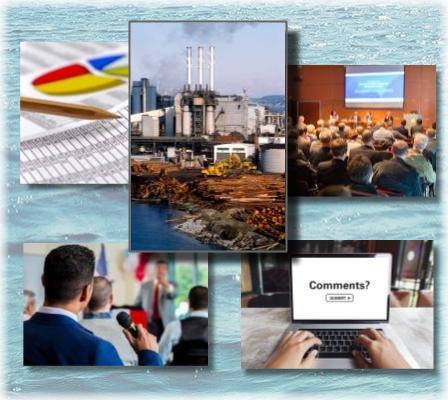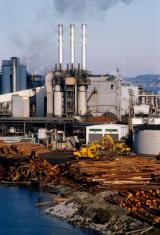Effluent Guidelines Plan
 EPA periodically reviews the existing Effluent Guideline regulations (also called Effluent Limitation Guidelines or ELGs), and updates them, as appropriate.
EPA periodically reviews the existing Effluent Guideline regulations (also called Effluent Limitation Guidelines or ELGs), and updates them, as appropriate.The Effluent Guidelines Program Plan, published every two years, identifies existing industries selected for regulatory revisions and new industries identified for regulation. The Plan provides a rulemaking schedule for any such activities.
- Current Effluent Guidelines Program Plan (January 2021)
On this page:
- Background
- Planning Process
- Participate in the Effluent Guidelines Planning Process
- Additional Information
Background
EPA publishes Effluent Guidelines, nationally-applicable water pollution regulations for industrial and commercial facilities. ELGs are technology-based regulations Technology-based regulationA regulation based on the performance of wastewater treatment and control technologies. The discharge standards are developed independently of the potential impact of a discharge on the receiving water body. (Impacts on specific receiving waters are addressed through other Clean Water Act mechanisms: Water Quality Standards and water quality-based effluent limitations in individual permits). based on the performance and costs of demonstrated wastewater control and treatment technologies. To date, EPA has issued ELGs for 59 industrial categories. These regulations apply to about 40,000 facilities that discharge directly to the nation's waters, 129,000 facilities that discharge to municipal sewage treatment plants, and certain construction sites.Cumulatively, ELGs prevent the discharge of over 700 billion pounds of toxic pollutants annually.
Technology-based regulationA regulation based on the performance of wastewater treatment and control technologies. The discharge standards are developed independently of the potential impact of a discharge on the receiving water body. (Impacts on specific receiving waters are addressed through other Clean Water Act mechanisms: Water Quality Standards and water quality-based effluent limitations in individual permits). based on the performance and costs of demonstrated wastewater control and treatment technologies. To date, EPA has issued ELGs for 59 industrial categories. These regulations apply to about 40,000 facilities that discharge directly to the nation's waters, 129,000 facilities that discharge to municipal sewage treatment plants, and certain construction sites.Cumulatively, ELGs prevent the discharge of over 700 billion pounds of toxic pollutants annually.
-
Learn more about Effluent Guidelines
Planning Process
In the ELG Planning Process, EPA is guided by the following goals:
-
Restore and maintain the chemical, physical, and biological integrity of the nation’s waters; and
-
Provide transparent decision making and involve stakeholders early and often during the planning process.
EPA considers four main factors when prioritizing existing ELGs for possible revision:
- The performance of applicable and demonstrated wastewater treatment technologies, process changes, and pollution prevention strategies to reduce pollutants in an industrial category’s wastewater;
- The costs (economic achievability) of demonstrated wastewater treatment technologies, process changes, and pollution prevention alternatives;
- The amount and types of pollutants in an industrial category’s discharge; and
- The opportunity to promote technological innovation or to eliminate inefficiencies or impediments to pollution prevention.
Participate in the Effluent Guidelines Planning Process
- Read the current Effluent Guidelines Plan
- Get Involved
- Contact EPA about an industry
- Learn about industrial discharges in your area
- Review the plans and support documents
- Submit comments
- Past Effluent Guidelines Plans
Additional Information
For additional information, please contact Phillip Flanders (flanders.phillip@epa.gov), Project Manager, at 202-566-8323.




